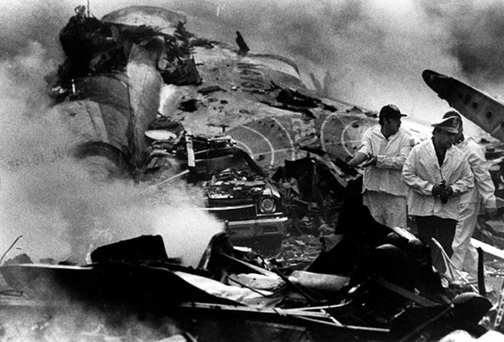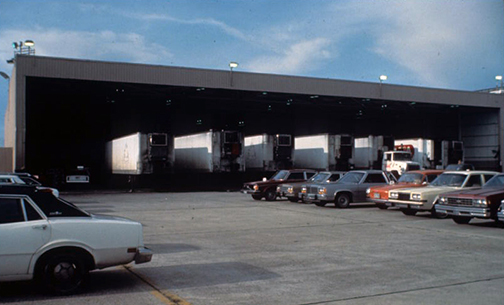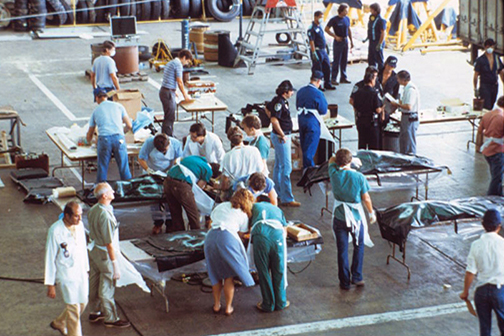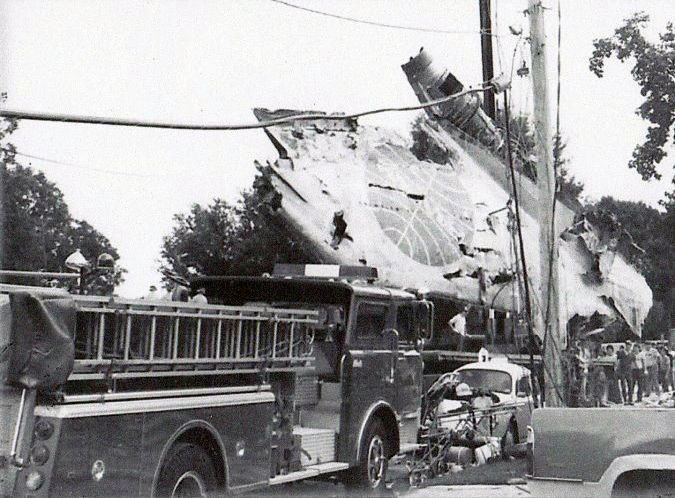Thirty-six years ago today a fully loaded Boeing 727 slammed into a Kenner, LA neighborhood leaving a wake of carnage, a debris field of nearly half a mile and 11 destroyed or heavily damaged homes. At the time the second worst aviation disaster in US history, the tragedy took the lives of all 145 on board as well as 8 residents of the subdivision on the ground. LSU Health New Orleans medical and dental school faculty played key roles in the response.
Late on the afternoon of July 9, 1982, calls went out for medical personnel to report to the site of the plane crash. LSU Health New Orleans Emergency Medicine faculty Drs. Jorge Martinez and Keith Van Meter responded. Dr. Martinez recalls that his LSU Health ED colleagues remained at Charity preparing for the onslaught of patients that never came.

With no survivors, attention turned to the grim task of identifying the victims. Officials sought the services of forensic dentists and volunteers from the dental community. About 20 faculty and residents from LSU Health New Orleans School of Dentistry were on the dental identification team that was assembled and led by LSU Health New Orleans’ Dr. Ronald Carr, now a member of the gratis faculty. The team also included Dr. Robert Barsley now Professor of Diagnostic Sciences and Director of Oral Health Resources, Community & Hospital Dentistry at the dental school.
The dental identification team began working the next morning in a temporary morgue set up in a Delta hangar at the airport. LSU Health New Orleans School of Dentistry supplied dental x-ray films, mobile lights, and other equipment, as well as the team’s leadership and expertise. Besides staging a dental identification area, the team also had to coordinate and train community dental volunteers, many of whom had no prior forensic experience, as they began their monumental task.


The dental team was responsible for 75% of the identifications, which they made, despite significant challenges, in nine days. Their efforts gave 116 families the solace of closure.
Media recognized the contributions of both Drs. Carr and Barsley during coverage of the 30th anniversary of the crash. Dr. Carr was interviewed on WWL-TV’s Morning News, and Dr. Barsley was interviewed for Pan Am Flight 759, a documentary on the crash, which has been shown throughout the state.
The lessons learned after the crash of Pan Am Flight 759 contributed to improved forensic disaster response. But its larger legacy is much safer air travel in the United States. The National Transportation and Safety Board concluded that the probable cause was a microburst-induced wind shear encountered during takeoff. This crash, along with a similar one three years later, led to the development of wind shear detection equipment and an FAA mandate for onboard installation of systems by 1993.

